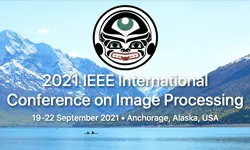Improving Neural Blind Deconvolution
Jan Kotera, Filip ÿroubek, V?clav ÿm??dl
-
Members: FreeSPS
IEEE Members: $11.00
Non-members: $15.00Length: 00:01:07
20 Sep 2021
The field of blind image deblurring was for a long time dominated by Maximum-A-Posteriori methods seeking the optimal pair of sharp image--blur of a suitable functional. Recently, learning-based methods, especially those based on deep convolutional neural networks, are proving effective and are receiving increasing attention by the research community. In 2020, Ren et al. proposed a deblurring method called SelfDeblur which combines the model-driven approach of traditional MAP methods and the generative power of neural nets. The method is capable of producing very high-quality results, yet it inherits some problems of MAP methods, especially possible convergence to a wrong local optimum. In this paper we propose several easy-to-implement modifications of SelfDeblur, namely suitable initialization, multiscale processing, and regularization, that improve the average performance of the original method and decrease the probability of failure.



